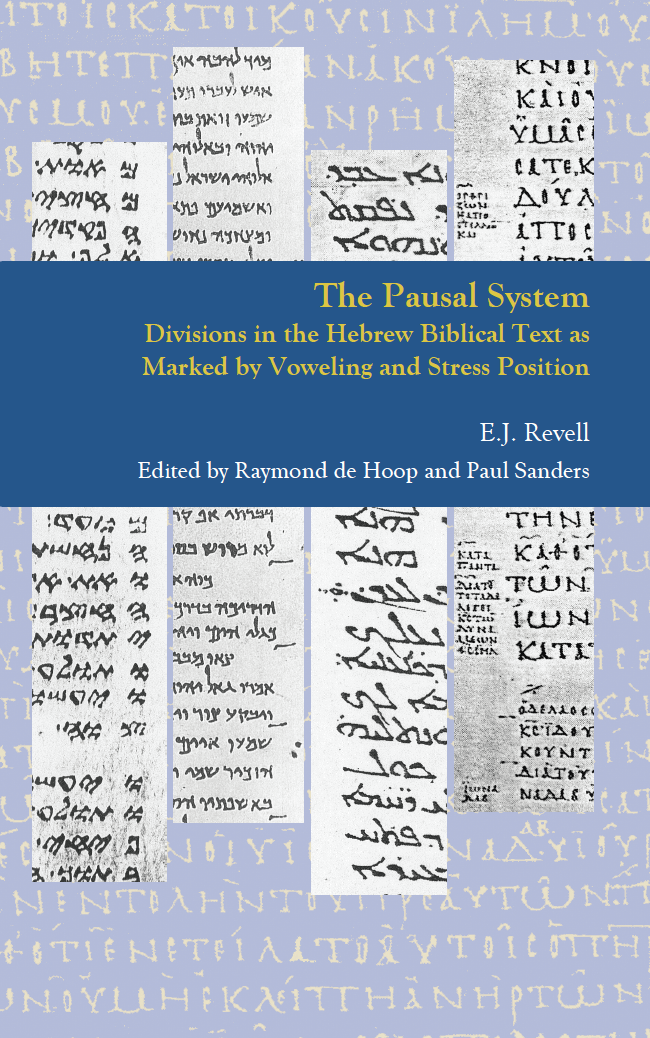The Pausal System: Divisions in the Hebrew Biblical Text as Marked by Voweling and Stress Position. Edited by Raymond de Hoop and Paul Sanders
£45.00
The volume contains the first classified list of all the relevant pausal forms in the Hebrew Bible.
In the Hebrew Bible, the ‘pausal system’ is a set of variations in voweling and stress position that marks the ends of units of various sizes. Pausal forms are already well known and have long been included in grammatical works.
However, it is rarely noticed that many pausal forms occur at unexpected positions. They may be marked with any disjunctive accent, or even with one of the conjunctive accents. The pausal forms represent an earlier division of the text and deserve special attention.
In addition to the pausal forms, the retraction of word stress (nesigah) and the use of the vowel qames on conjunctive waw also appear to mark the ends of units. All these indicators are included in this comprehensive study of the pausal system and in the accompanying list of terminal markers. The volume contains the first classified list of all the relevant forms in the Hebrew Bible.
Additional information
| table of contents | 1. Introduction 2. Pausal Forms (P) 2.1 The Form 2.2 The Placing of Pausal Forms 2.3 Accentuation and Pausal Forms 2.4 Word Structure and Pausal Forms 2.5 Uncertainties in the Identification 3. Minor Pausal Forms (Pm) 3.1 The Forms 3.2 The Positions 4. P4 Forms (P4) 4.1 The Forms and Their Classification 4.2 The Value of A Forms of Words of Type 4 5. NESIGAH (N, Nw) 5.1 The Phenomenon 5.2 The Vowel Patterns 5.3 The Situations 5.4 Accentuation and Nesigah 6. Conjunctive WAW with QAMES. (W) 6.1 The Phenomenon 6.2 The Use of Waw with Qames. 6.3 Other Cases of Conjunctives with Waw with Qames. 6.4 Waw with Qames. in the Three Books 7. Conclusion |
|---|


Reviews
There are no reviews yet.